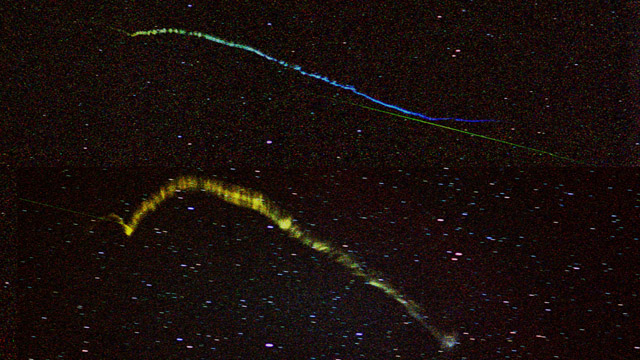
The Leonids are back—and they're not a family circus group from Russia! This is the annual meteor shower of November that offers us the chance to see a bit of very ancient history disintegrate in a fiery second. What an opportunity! And, this meteor shower has a personal connection for me, touching on my childhood as well as the young adulthood of my grandfather.
First, the facts for those of you who just want to know where to go and when to do it.
The peak of the annual Leonid meteor shower occurs in the early morning hours this Sunday, November 18. The shower has actually been going on for about a week and will continue for a few more days, but November 18 is when you can expect to see the most meteors per hour. The shower will become visible post-midnight and into the early morning hours of Sunday as its radiant point (the patch of sky they appear to fly out of, in this case the constellation Leo) rises in the eastern sky.
This year, the anticipated meteor rate—the "ZHR," or "Zenith Hourly Rate"—is somewhere in the 10 to 15 range. That is, under good viewing conditions (clear sky, low light pollution levels and minimal interference from moonlight) and if the shower's radiant point were positioned directly overhead at the zenith, you could expect to see 10 to 15 meteors each hour. That may not sound like a lot, but really that's a meteor every 4-6 minutes!
The moon is not an issue this year; it will be setting before midnight, leaving moonless skies for the rest of the night. The trick is to have clear skies and to get away from city lights as much as possible. If you live in the city, but want to see Leonids, plan a trip to a spot away from major congestion. In the San Francisco Bay Area, there are a few good places to try: Henry Coe State Park near San Jose, Skyline Blvd. on the peninsula south of San Francisco, the Santa Cruz Mountains, Mount Diablo and quite a few points north in Marin and Sonoma counties. In the East Bay, the hills from Berkeley down through Hayward have a lot of roadside light-sheltered areas to find.